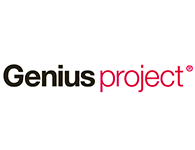A guest post by my friends at Genius Project
A project team is a group of people who work together on a project with a common goal. They have different skills and specializations but their work all culminates in the delivery of the project.
Numerous studies have shown that a project progresses effectively when the team is working on activities that are clearly defined and planned. While it is important to set a timetable and targets, some companies are confronted with cultural differences, dispersed geographical locations and different working methods. Teamwork is not always so simple!
Here are some tips to increase collaboration in your project team.
- Roles and responsibilities must be set from the get go. It’s necessary for everyone to know their objectives and mission to be able to work in their role effectively. In addition, it’s important to define the project leader and who to contact in the event of a problem or change.
- Encourage employees to share their opinion. It’s important to provide input during meetings and discussions. The team is more dynamic and responsive when the players propose solutions and share any difficulties. A team always benefits from the discussion and the different opinions are enriching.
- Organize useful meetings. We cannot say enough that transparency is essential in project management. This transparency makes it possible to have a positive dynamic within the group. Collaborators are informed, instructions are clear and information is distributed. A meeting should only be held if there is a need. The meeting should have a simple and precise objective. It may also be recalled that the project kick-off meeting is also important for a project team. It allows team members to get acquainted.
- Spend time as a team. Team members need to spend time together informally. Activities outside the office are essential for strengthening group dynamics. Whenever possible, this reinforces the feeling of being part of a team. Team lunches are easy to organize and equally effective.
- Communicate. Communication is an essential criteria for successful projects. Meetings, emails, online discussion groups … there are many possibilities to ensure optimal communication when delivering a project. Email is not always an indicator of the quality of communication, and that’s where project collaboration tools come in. Genius Project offers a “wall”, akin to most social media platforms which is integrated into the project management software to facilitate communication within the team.
A connected project team is essential to successful project delivery. Organization, communication and planning enable employees to gain a global vision of the project, to understand the issues and to be more effective in their respective roles.For more information about Genius Live!
You can visit the Genius Project website.



